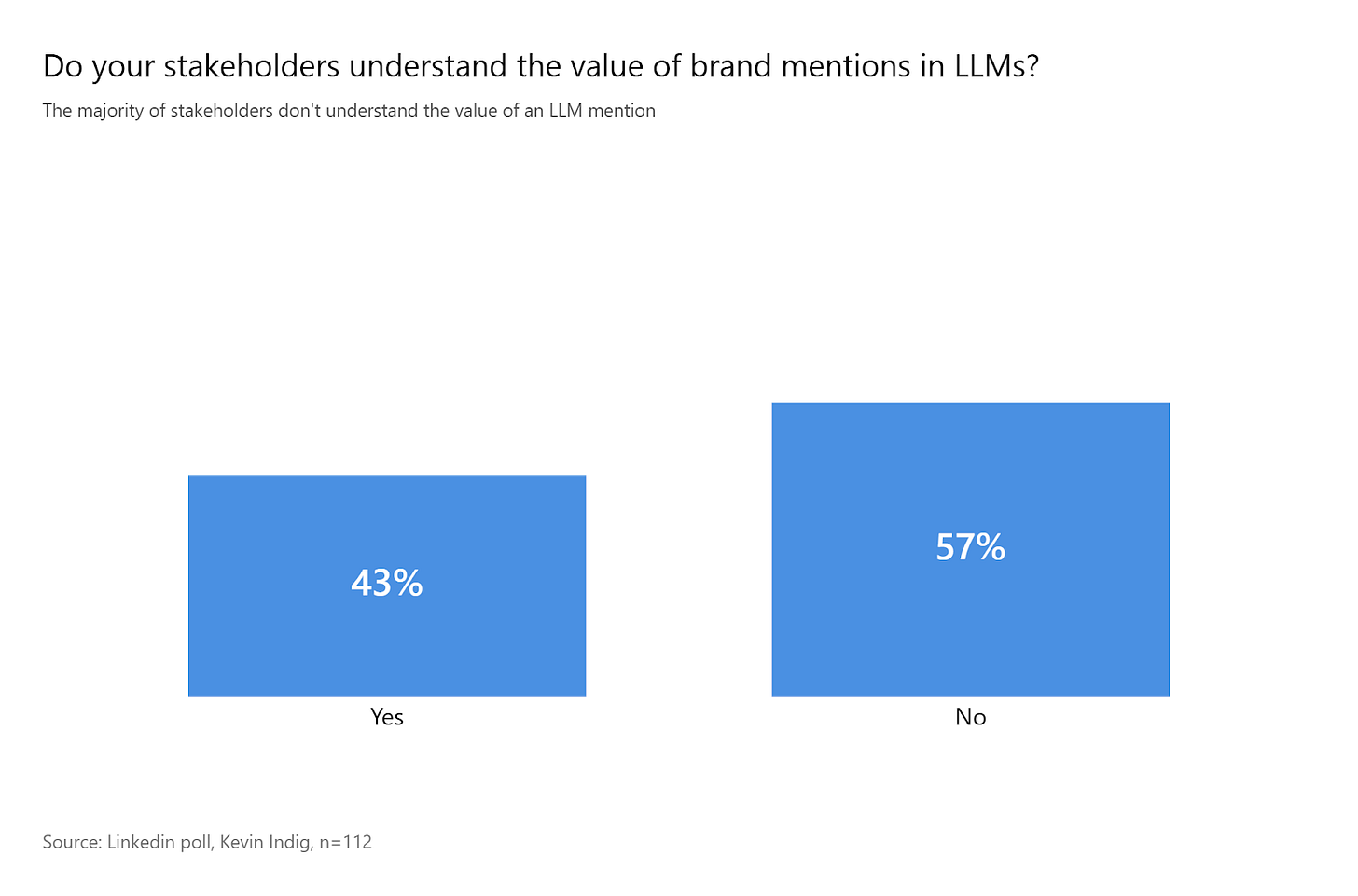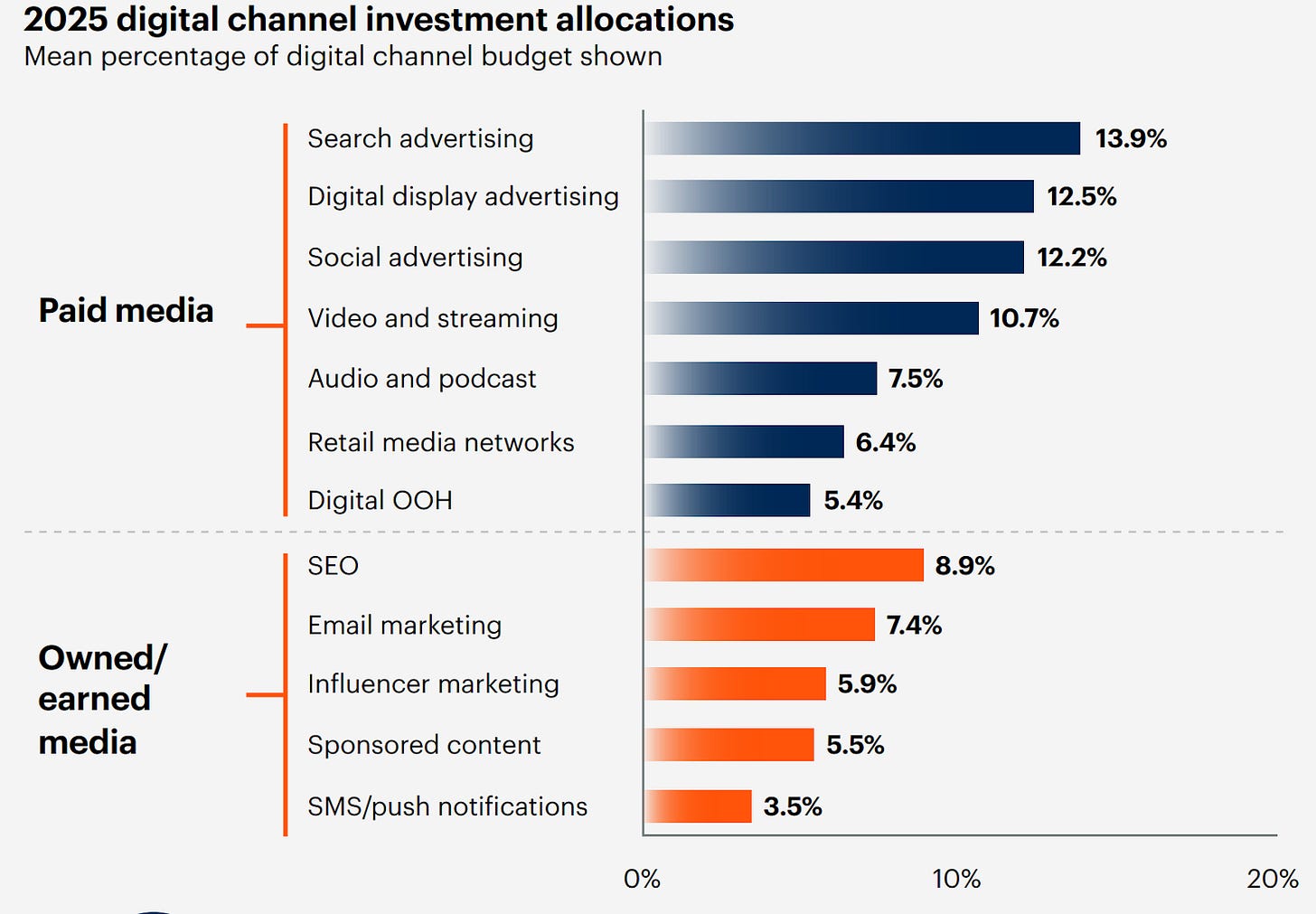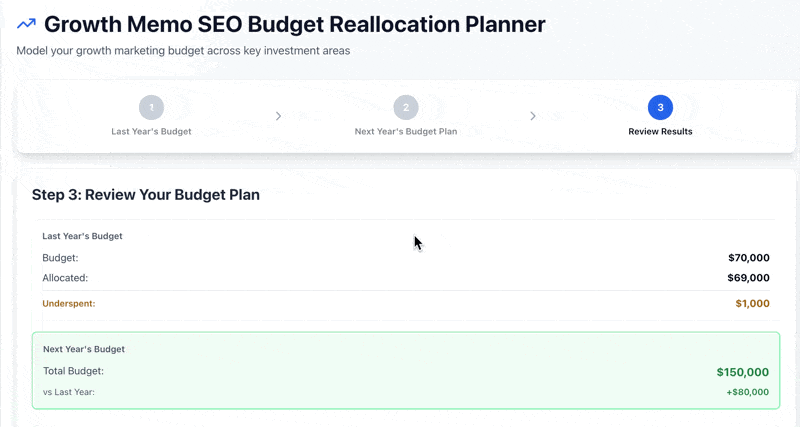Budget SEO for capacity, not output
Here’s how to rebuild your SEO budget for influence in a zero-click world.
This Memo was sent to 22,663 subscribers. Welcome to +115 new readers!
You’re reading the free version of Growth Memo. This week, premium subscribers get the SEO Budget Reallocation Planner to guide your 2026 resource allocation.
SaaS visibility compounds like revenue.
But AI answers, zero-click results, and constant Google updates are cutting into clicks and credibility.
That’s why I like dofollow.com. They help B2B SaaS companies earn high-authority mentions on trusted sites that drive rankings, traffic, and coverage in AI search.
Think Surfshark, Pitch, Experian - the brands that stay visible through every algorithm shift because their backlinks come from real authority.
Learn what 200+ SaaS brands are doing differently at dofollow.com.
Marketing leaders are still budgeting to grow clicks in 2026, even though AI Overviews cut organic traffic in half and AI Mode kills it almost entirely.
Meanwhile, close to 60% of those who responded to my recent poll report their stakeholders don’t understand the value of brand mentions in LLMs.
The SEO budget conversation has to move from “Why isn’t SEO driving more clicks? / What can we do to drive more traffic?” to “What capabilities do we need to build authority in new discovery channels?”
In 2026, the best marketing teams will stop measuring SEO success by clicks and start treating it as what it really is: a capacity and influence system.
1/ Traffic-based ROI is a decayed model.
Marketing budgets, on average, rose modestly in the last 12 months. Overall marketing budgets are up 3.31%. And digital marketing spending specifically is up 7.25%.
SEO gets less than 10% of the marketing budget despite being one of the most efficient channels.
And for years, marketers invested this sliver of SEO budget like paid media - spend more, get more clicks. It’s time to let this go. There’s discomfort here, of course: We’re losing a significant leading indicator with traffic stagnation. In theory, SEO now appears to take “longer” to show results.
As Google dials AI in the search results up, organic clicks are destined to shrink. AI surfaces decouple visibility from clicks. Your brand can appear in every AI output response and get zero measurable traffic. In Semrush’s AI Mode study, 92–94% of AI Mode sessions produced no external clicks. (But that doesn’t mean people buy less. The opposite could be true.) Slowed growth in clicks is not a performance issue of an SEO team - it’s a system feature, and it’s the future of search. Platforms want users to stay within their ecosystems.
The implication: Traffic no longer equals demand. Brand visibility happens upstream inside AI responses, UGC threads, and recommendation loops that don’t often show in your analytics.
2/ SEO budgets are capacity allocation, not spend-to-output trading.
With paid ads, you’re buying impressions. Double your spend, you roughly double your impressions (with diminishing returns). There’s a direct, measurable relationship.
But most SEO costs are fixed: salaries, tool subscriptions, infrastructure. You pay for capacity regardless of whether your team delivers a 10% or 50% lift.
65% of those surveyed by Search Engine Journal don’t expect a reduction in SEO budget for 2026.
When deciding on next year’s budget, the question “What ROI do we expect from this spend?” is an outdated one. Instead, you need to answer this query: “What capabilities do we need to earn visibility?”
The variable isn’t spend, it’s prioritization and execution quality:
Paid media is transactional: Spend → user impression → user click.
SEO is compounding: Optimization → brand visibility → user impressions → brand influence.
Your SEO dollars don’t buy results. They buy the ability to earn trust and surface in the right systems.
3/ Design your SEO budget around influence, not output in 2026.
Your budget planning must be scenario-based, not traffic-forecasted.
Because your SEO costs are mostly fixed, you can model it out: “If we allocate 40% of capacity to digital PR, 30% to technical SEO, 20% to content operations, and 10% to foundational research, what visibility outcomes can we reasonably expect?”
Allocate resources by priority, not by historical traffic performance. Strategize your resources for the zero-click world ahead:
Digital PR: Third-party signals drive 85% of brand visibility in LLMs. Digital PR and high-quality, topically related backlink investment are crucial. The biggest gains come when you hit the upper boundaries of link quality/authority over volume.
Technical SEO + UX: Get the foundation right. Agents need to review your site and make recommendations or decisions quickly.
Audience + first-party data research: Users are making decisions about brands within the AI Mode outputs—know your audience and which search surfaces they use. Data from one study showed 71% of companies that exceeded revenue goals had documented personas.
Content operations + re-optimizations: Content recency is non-negotiable, and LLMs prefer it. Some evidence shows refreshing every ~90 days could be a competitive edge.
Additive content rich with information gain: Evergreen content is less valuable. Additive content that provides net-new takes, insights, and conversations is rewarded.
Engineering + design support for interactive tools: Once the validation click is earned, you must provide value that’s worth on-page engagement.
Video and custom graphics: Organic low-fi video content and custom graphics are earning highly visible mid-output placement in AIOs. Don’t let restricted resources stop you from investing in this visibility lever.
Your brand’s prioritization could vary based on audience, goals, and - of course - capacity.
Below, premium subscribers get further guidance on how to build a scenario-based SEO budget, along with an SEO Budget Reallocation Planner that visualizes budgets based on several different prioritization scenarios.
4/ Scenario-based budget planning is the SEO survival move.
Think in a scenario of capabilities, not line items.
In less than 7 minutes, the Growth Memo budget planning tool generates:
A visual comparison between this year’s budget vs. your projected budget
5 different growth priority scenarios (or create your own with sliders)
Auto-builds a report you can screenshot + drop in a slide deck for stakeholder presentations











